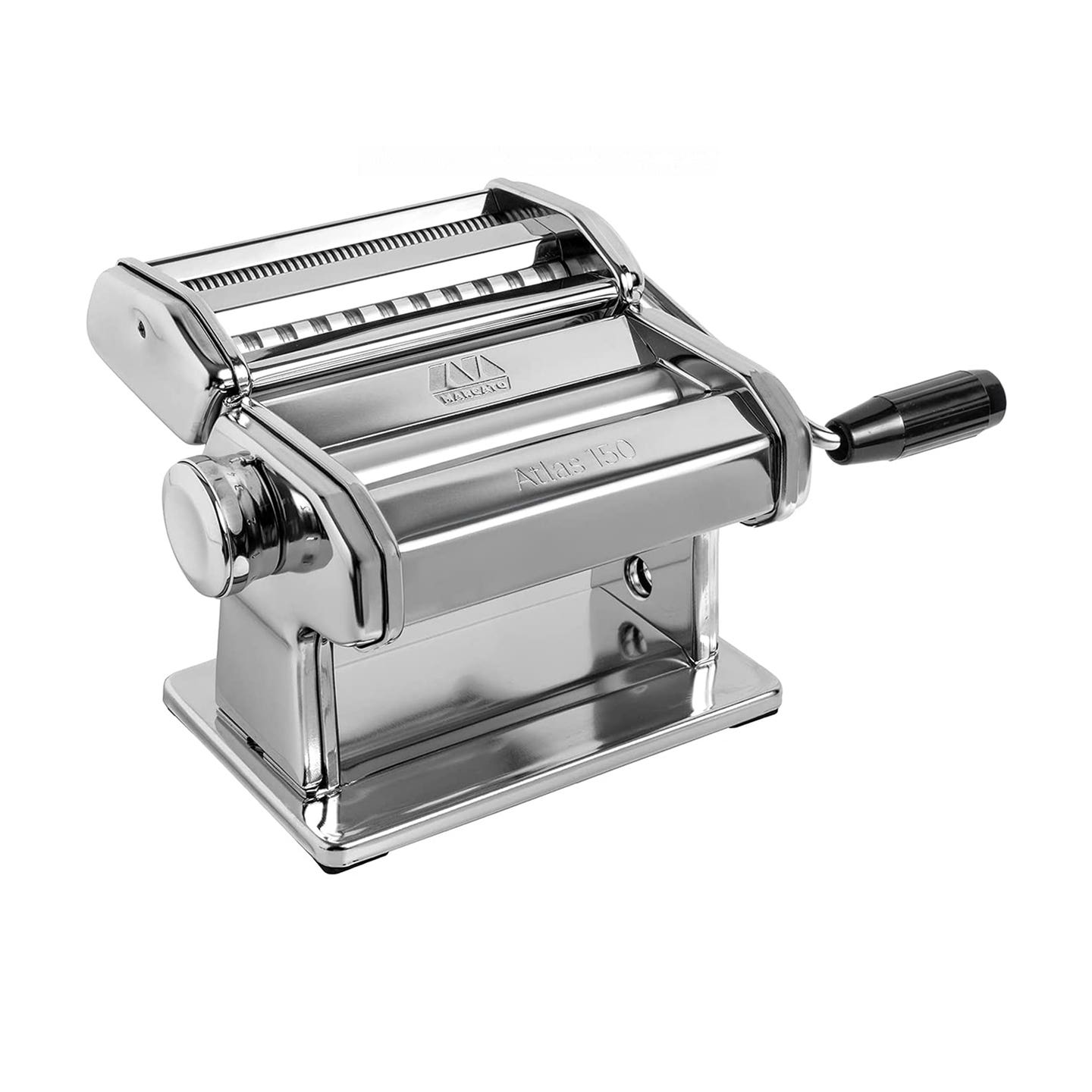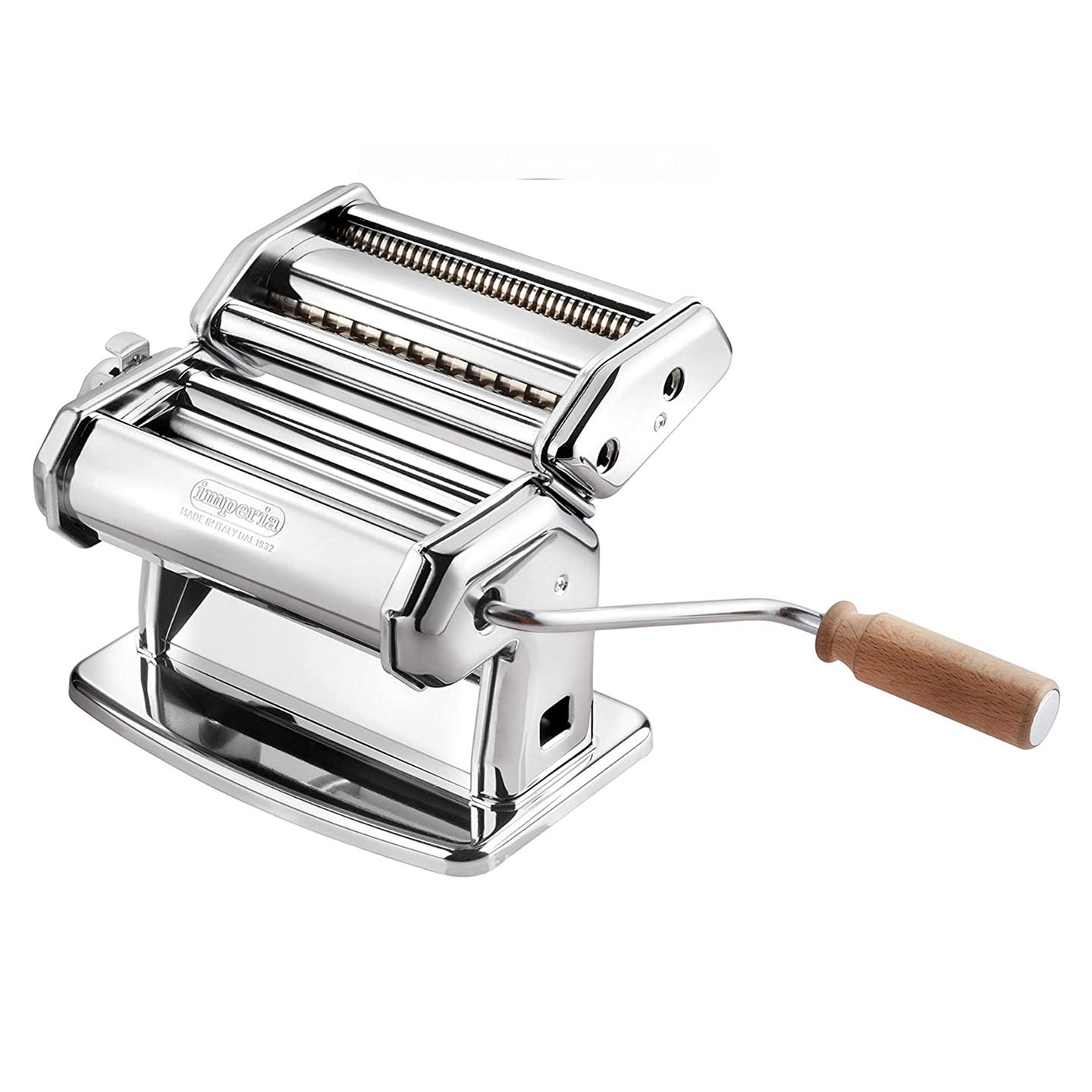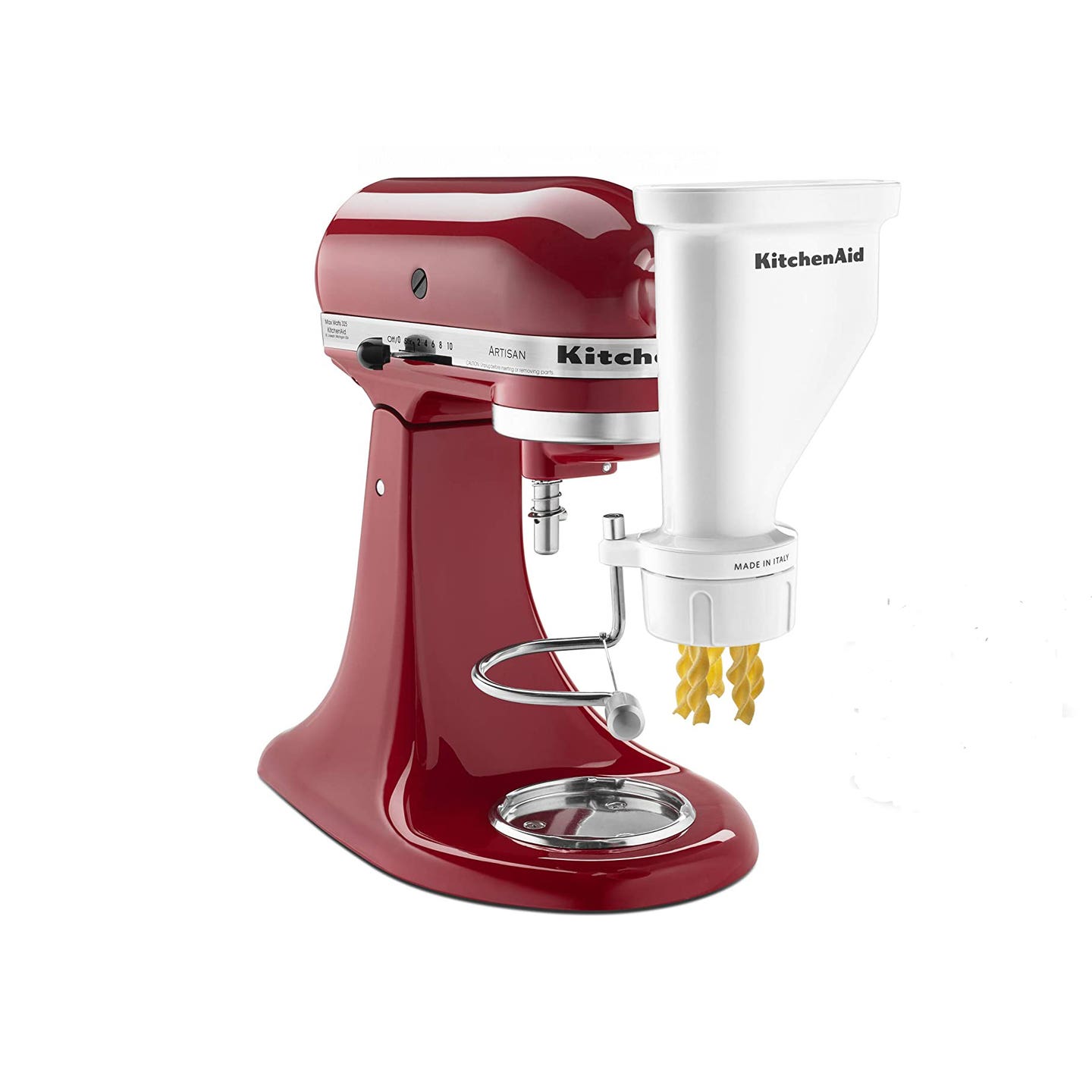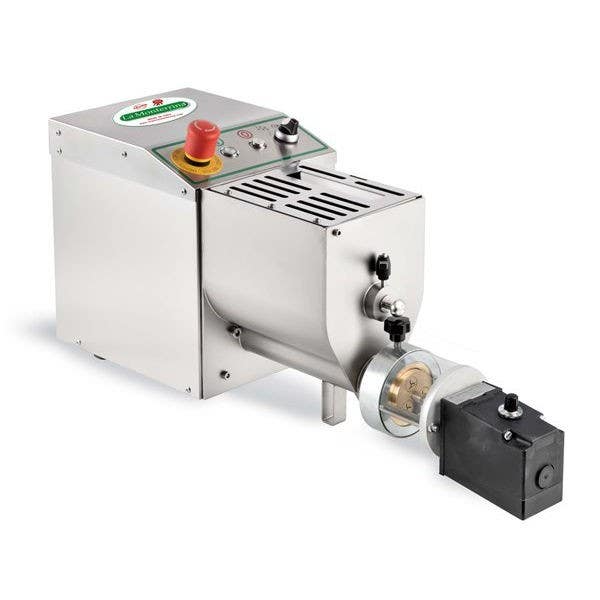The Best Pasta Makers Are a Lot Like the Original Designs—With Some Key Upgrades
It’s key to get a roller with a range of thicknesses.
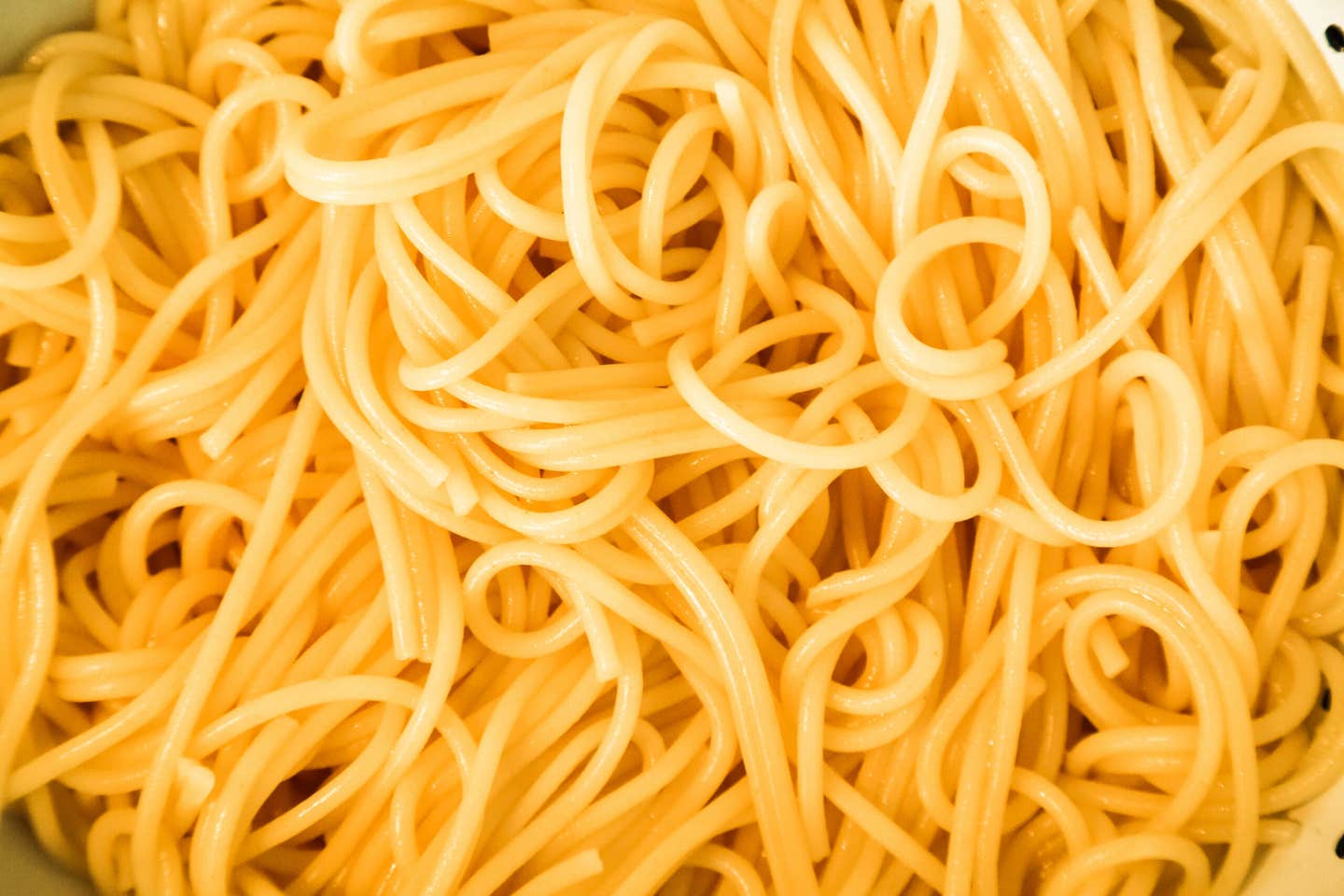
To make fresh pasta at home, you could simply arm yourself with a long rolling pin, some elbow grease and an even longer wooden board, as sfogline (the name of the women who roll sheets of pasta by hand) have done for generations in Emilia Romagna. And, to wit, there is a very good argument to rolling pasta that way—just see what chef Evan Funke has to say about it. But the early-20th century invention of pasta makers gave many home cooks the option of making fresh pasta quickly and easily, and do to this day.
A mini-history lesson: In 1930, just outside of Padova, Italy, Otello Marcato created the first pasta machine in the workshop behind his home. He would ride around with them strapped to the back of his bike, trying to sell the machines in neighbouring villages. A couple of years later, Imperia, a company based in Piedmont, produced their pasta machine with an eye toward exporting them to Italian immigrants in the U.S., who found that the contraption allowed them to easily create a taste of home in their new country.
Imperia’s machines, as well as those made by Marcato, have barely changed since they were first made, and should still be the go-to when it comes to seeking out your first pasta machine. There are also electric pasta rolling and shaping attachments made for many different brands of stand mixers such as KitchenAid. Professional and semi-professional machines with extruders are also on the market, which can create shapes very quickly that you otherwise wouldn't be able to make by hand.
Once you have one, there are endless possibilities for what you can make with even the most basic machine. (And let's not be limited only to pasta: you can technically roll out any kind of dough here—it is excellent for super thin, crunchy crackers or pastry dough). Rome-based food writer Rachel Roddy, author of An A-Z Pasta, inherited her Imperia machine from a friend, along with some very good guidance on where to keep it.
“She not only gave me a practical lesson and showed me how easy and intuitive the machine is for making all sorts of shapes,” Roddy remembers. “She suggested I didn't hide the Imperia in a cupboard, rather that it sat in an accessible, visible place. It was the best advice and I am sure part of why I use it so often.”
When it comes to choosing a pasta machine for use at home, I feel that manual is the best option, at least to start. Meryl Feinstein, Pasta Social Club founder and resident pasta maker at Food52, agrees. “If you're making pasta at a production level, opt for something larger and electric,” she says. “But for the home cook (myself included!), I find rolling pasta with a hand crank provides a better understanding of what's happening to the dough.” Read on for our top recommendations and tips from experts, and then get rolling.
Our Top Picks
- Best Overall: Marcato Classic Atlas 150 Pasta Machine
- Best Entry Level: Imperia Pasta Machine
- Best for a Variety of Shapes: KitchenAid Pasta Press attachment
- Best for Serious Pasta Makers: La Monferrina Dolly Electric Pasta Machine
Best Overall: Marcato Classic Atlas 150 Pasta Machine
Best Overall
Marcato's most popular product is by far the Atlas 150, a chrome steel machine that comes in eight shiny and matte colours to match your kitchen aesthetic. An advantage of Marcato machines is that their rollers have 10 different thicknesses, ranging from 0.5mm to 4.8mm, which allows you to have a few more options. The tagliolini and fettuccine attachment makes 1.5mm to 6.5mm noodles, and there are also 12 other optional attachments for different shapes and types of pasta. Feinstein is also a fan. “I’ve tried my hand at several brands, and every time I go back to my manual Marcato Atlas 150,” she says. “It may not have the speed of an electric machine, but it’ll churn out beautifully smooth and consistent pasta sheets every time.” You can, however, upgrade your Atlas with its ‘pastadriver’ motor fitting. This turns your manual machine into an electric one, meaning you won’t need to clamp it onto a surface to use.
Best Entry Level: Imperia Pasta Maker Machine
Best Entry Level
The classic Imperia machine offers rollers of six thicknesses and an attachment for tagliatelle (2mm thick noodles) and fettuccine (6.5mm thick), while their Titania model is an all-in-one machine with the noodle cutter already incorporated. These stainless steel machines are robust, particularly the Titania, and have a charmingly vintage look. That’s because Imperia hasn’t actually ever updated the design of the machines—you'll find them unchanged from the way they were in the advertisements of the 1950s. Like Roddy, I own and use my Imperia the most, and find it a sturdy and reliable pasta machine that is so simple to use. My kids love using it just as much as I do.
Best for a Variety of Shapes: KitchenAid Pasta Press
Best For a Variety of Shapes
If you already own a KitchenAid mixer and pasta roller, and you're wondering where to take your pasta game next, then try using one of these. It attaches to your mixer and comes with six different dies for making bucatini, spaghetti, rigatoni, fusilli and two sizes of macaroni. The press comes with a built-in wire cutter to control the length of your pasta, and it’s a favourite of blogger Alec Morris of Pasta Et Al. He loves it for being able to make “pasta shapes that would otherwise be very fiddly and time-consuming to shape by hand, or available only as dried supermarket pasta.” Aside from being able to make last-minute rigatoni very quickly, he adds that it’s worth considering if just starting out with extruded pasta. “Whatever machine you go for, interchangeable plates will add a whole range of new pasta shapes to your repertoire,” he says.
Best for Serious Pasta Makers: La Monferrina Dolly
Best for Serious Pasta Makers
La Monferrina is the other half of the Imperia company (also known as Imperia & Monferrina) which specializes in electric and professional pasta machines. When I asked one of the pastai that I admire most—Yumhwa Lee, the private dining chef behind Benfatto95 in Singapore—which extruder he recommends, he zeroed in on Monferrina. While he uses a La Monferrina P3, which is a restaurant-grade electric pasta machine, he recommends keen pasta makers look to the Monferrina Dolly for smaller-scale, tabletop production.The Dolly is a compact, all-in-one electric machine that mixes, kneads (it works for bread or pizza dough, too), and extrudes shapes that would be otherwise tricky to do by hand. Like in professional pasta machines, the dies are made of bronze, which creates a desirably rough texture that helps sauce cling to each noodle (teflon-coated inserts are also available for a smoother texture). With one of these, you can roll out flat sheets of pasta for making lasagne or filled pasta and, with the option of dies available, practically every pasta shape you can think of, from alphabets and risoni to wagon wheels and shells.
Features to Keep in Mind
Electric or Manual
Traditional pasta machines are manual, meaning you have to turn a crank with one hand while guiding the sheet of pasta out of the machine with the other. It’s a skill you learn like a dance: the more you do it, the better you get. An electric machine does not require cranking, which is helpful if you are making huge quantities of pasta or need to use both hands. However, since they produce very similar results to manually-rolled pasta sheets, you may want to think twice about spending the extra money—especially when you consider the longevity and maintenance of a motorized machine or attachment. Remember that manual machines have fewer delicate parts, which means they will last longer in the end. They are also considerably easier to maintain and clean, requiring only a dusting of flour.
Rollers
The ideal rollers should be made out of metal (aluminum or stainless steel, usually) rather than plastic or rubber, and are often in standard widths of 150mm or 180mm. The product name usually indicates how wide they are; in other words, the Marcato Atlas 150 has rollers that are 150mm wide. The width between the rollers, and hence the thickness of your pasta, is controlled by a numbered knob, and machines of different designs and brands will have a different number of widths. The main function of these widths is to slowly elongate and thin the pasta sheet, which is rolled at each width in order from thickest to thinnest. They also give you the option of deciding how thin the pasta should be. A more robust pasta, say pappardelle to be dressed in a hearty beef ragu, would benefit from not being too thin that it breaks. Tonnarelli noodles also need to be on the thicker side. A filled pasta such as ravioli can be thinner, as you end up with a double layer of pasta. I own both an Imperia and Marcato pasta machine, and I personally appreciate having more settings on the roller widths on the Marcato; it allows for a little bit more precision when deciding how thin or thick you would like your pasta.
Types of Pasta Shapes
You can make numerous different pasta shapes with even the most basic pasta machine. A flat sheet of pasta can give you lasagne sheets, maltagliati (or 'badly cut' shapes, originally born from pasta scraps), cannelloni pasta tubes, and filled pasta of every shape imaginable. And with a few extra pasta tools, you can create ridged or embossed shapes such as garganelli or corzetti. Many pasta machines already come with attachments for spaghetti, tagliolini, tagliatelle or fettuccine—which vary in widths from 1.5mm to 6.5mm—although you could also make these by simply using a sharp knife or a pastry cutter to slice through rolled sections of the dough.
Additional Attachments
There are a variety of attachments and accessories available to help you get the most out of your pasta maker. One of the more interesting is the ravioli attachment, and both Imperia and Marcato make one. To use it, you have to artfully place two sheets of pasta inside, add the filling between them, and then crank slowly; the attachment does the rest. Other attachments can give you a crinkle-cut edge for pappardelle, reginette or malfaldine. Imperia has a 'millegnocchi' attachment for producing short pasta shapes like gnochetti sardi and cavatelli.
Pasta Extruders
A pasta extruder is a manual or electric device that pushes the pasta dough through a die for creating long and short pasta shapes, from spaghetti and fettuccine to rigatoni and fusilli. The dough is forced through a cylinder and squeezed out of the die, which you can change for each shape of pasta, and cut at your preferred lengths as it exits the extruder (either manually or with a rotating blade). A manual extruder can be as simple as a metal cylinder with a hand crank (much like pasta rollers) and changeable discs that hold the die for each pasta shape. Marcato’s Regina is a manual extruder with steel dies that has a larger body for mixing the dough incorporated into it, as well.
One of the biggest differences with using a pasta extruder is the consistency of the pasta dough. Lee explains that you also need to pay attention to the flour you use with an extruder. “The only thing about using extruders is selecting only coarse ground semolina and not over hydrating the mixture—usually one part water to three parts semolina, although this could change depending on the shape,” Lee advises. Morris has similar advice for the KitchenAid extruder as well, telling me that “the real trick to extruder success is managing your dough moisture. Unlike non-extruded pasta dough, it has to be relatively dry, resembling buttered breadcrumbs (it should be crumbly, but hold together when pinched between your fingers).”
Ask the Experts
How do I clean my pasta maker?
I once lent my pasta machine to my elderly neighbour in Florence, who lamented that her son had borrowed her pasta machine and destroyed it by putting it in the dishwasher. Do not wash your pasta machine with water or soap—just dust off the flour. I find it can be useful to roll some excess pasta dough through it to pick up the stray flour inside. Roddy has a great tool for cleaning her Imperia: “I clean with a paint brush with nice soft bristles,” and adds, “at best, wipe with a damp cloth.”
What’s the best way to store fresh pasta?
If you're not cooking the pasta right away or within a couple or hours, the best option is dusting well with some fine semolina or some extra flour, then drying or freezing it. Long pasta can be rolled into loose 'nests' and left on a wooden board to dry, and Roddy hangs hers up over coat hangers. For longer-term storage, Feinstein opts for the freezer. “Just freeze the pasta on a semolina-dusted tray until solid, about 25 minutes, then shake out the excess flour, transfer to a freezer-safe bag, and return to the freezer,” she says. “When you're ready to cook it, go straight from the freezer to boiling water—no need to thaw. Frozen pasta tastes best the sooner you cook it, but will last for up to three months.”
Keep Reading
Continue to Next Story
